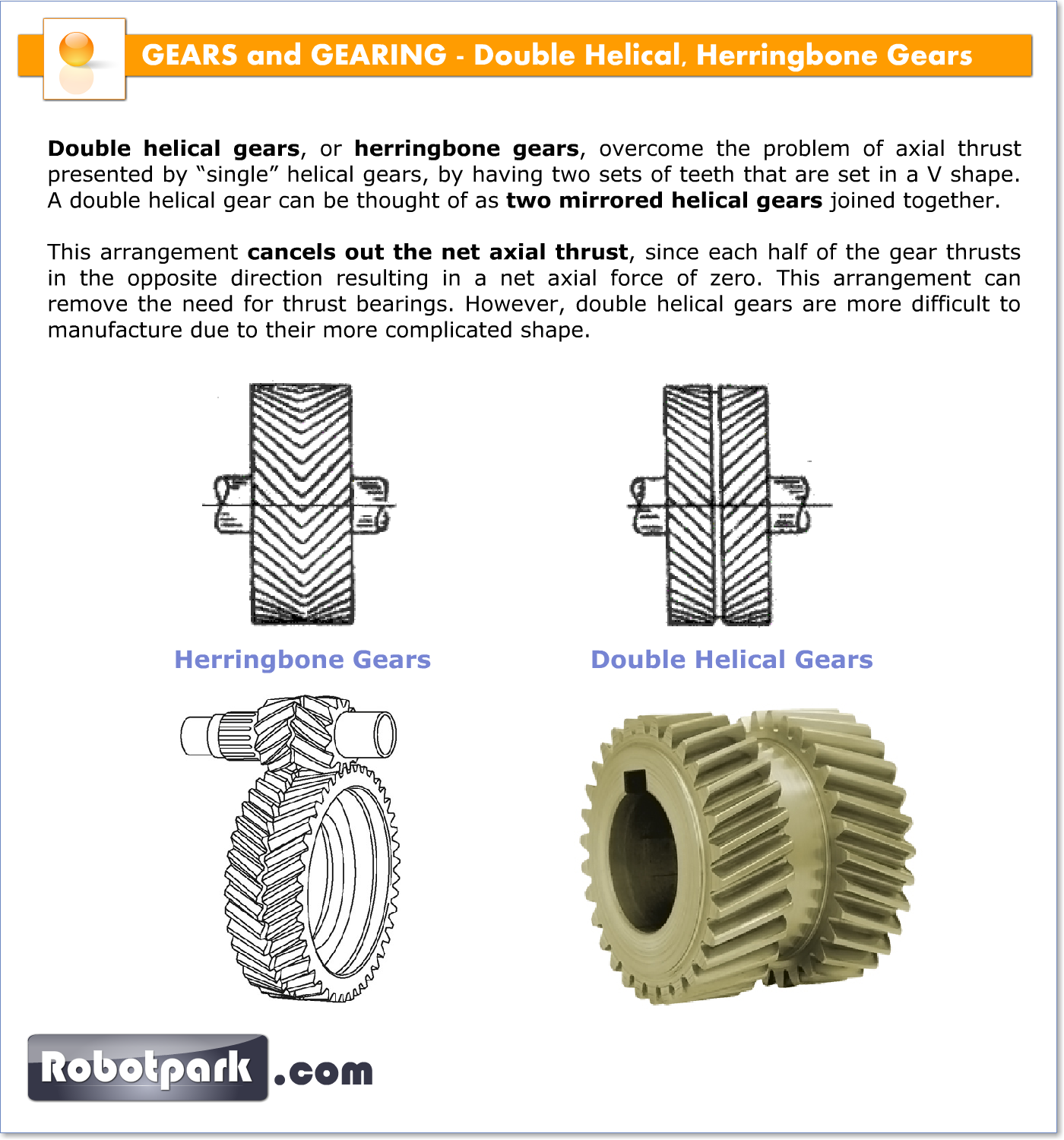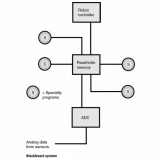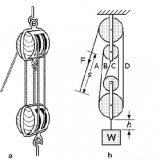Robotic Mechanisms – HERRINGBONE – DOUBLE HELICAL GEARS 51037
Double helical gears, or herringbone gears, overcome the problem of axial thrust presented by “single” helical gears, by having two sets of teeth that are set in a V shape. A double helical gear can be thought of as two mirrored helical gears joined together. This arrangement cancels out the net axial thrust, since each half of the gear thrusts in the opposite direction resulting in a net axial force of zero. This arrangement can remove the need for thrust bearings. However, double helical gears are more difficult to manufacture due to their more complicated shape.
For both possible rotational directions, there exist two possible arrangements for the oppositely-oriented helical gears or gear faces. One arrangement is stable, and the other is unstable. In a stable orientation, the helical gear faces are oriented so that each axial force is directed toward the center of the gear. In an unstable orientation, both axial forces are directed away from the center of the gear. In both arrangements, the total (or net) axial force on each gear is zero when the gears are aligned correctly. If the gears become misaligned in the axial direction, the unstable arrangement will generate a net force that may lead to disassembly of the gear train, while the stable arrangement generates a net corrective force. If the direction of rotation is reversed, the direction of the axial thrusts is also reversed, so a stable configuration becomes unstable, and vice versa.
Stable double helical gears can be directly interchanged with spur gears without any need for different bearings.
Working
- Helical gears come with longer and stronger teeth than other classes of gears
- Because of greater surface contact area on teeth, these gears are able to effectively carry heavy loads
- These helical gears are quiet and make fewer vibrations
- These gears are similar to spur gears except the teeth of helical gears that are cut at angle to axis
- These are available in right as well as left hand configuration choices
Application
The most common application usage of these gears is in the field of Power Transmission as its curved teeth allow efficient handling of high capacity power transmission. Further, these gears help in achieving reduced pulsation because of which these are used for extrusion and polymerization applications.Apart from these, some of the other uses of these Herringbone gears include :
- On heavy machinery
- For external gear pumps
- In applications that typically need higher pressures and larger percentages of filled material






